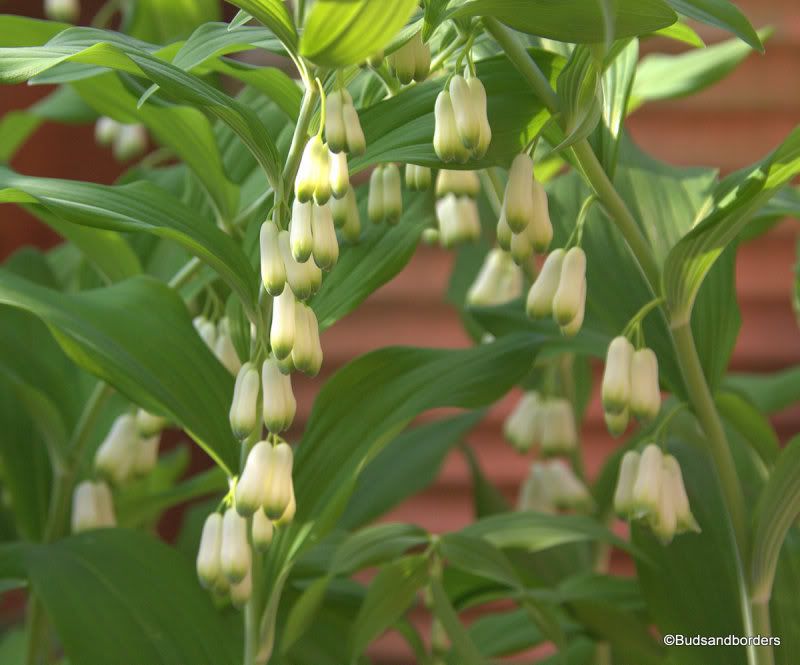
Solomon’s Seal
Polygonatum biflorum
Other Names: American Solomon's Seal, King Solomon's Seal, King Solomon's-seal, Small Solomon's Seal, Lady's Seals. St. Mary's Seal.
Habitat
Perennial native herb found growing in moist sandy, loamy or rocky woods and thickets, N. America from New Brunswick to Michigan, south to Tennessee and Florida. Cultivation: a very hardy plant, it prefers a light soil and a shady situation. Seeds, or transplants, if taken up with plenty of soil. The creeping root, rhizome, or underground stem, is thick and white, twisted and full of knots, with large circular scars at intervals, these scars give Solomon's Seal it's name. Stems grow to a height of from 18 inches to 2 feet, or even more and bend over gracefully. Large, light green, and broad ovate leaves grow alternately on the stem, clasping it at the bases. The flowers are tubular, succulent and thick, light yellow- green, and hang in little drooping clusters of two to five, growing from the leaf axils. Flowers bloom April to June. The fruit is a small berry about the size of a pea, blackish-blue, fruit is not edible, said to be poisonous. Gather roots in fall as flows fade, dry for later herb use.
Properties
Solomon's Seal is edible and medicinal, the young edible shoots are an excellent vegetable when boiled and eaten like Asparagus. The root is edible after boiling in three changes of water or sun baked, and is a good source of starch. This herb has a long history of use in alternative medicine dating back to the time of Dioscorides and Pliny. The main constituents are saponins (similar to diosgenin), flavonoids, and vitamins. A medicinal infusion of root or rhizome, is used in alternative medicine as an astringent, demulcent, and tonic. The dried herb is taken as a laxative and restorative, and is good in inflammations of the stomach, indigestion, profuse menstruation, lung ailments, general debility, bowels, piles, and chronic dysentery. A medicinal poultice of the fresh roots is said to fade bruises, also applied to cuts and sores.
Folklore
Once believed to have aphrodisiac properties, and used in love potions. More than likely due to its ability to stop profuse menstruation. Gerard says: 'The roots of Solomon's Seal, stamped while it is fresh and greene and applied, taketh away in one night or two at the most, any bruise, blacke or blew spots gotten by falls or women's wilfulness in stumbling upin their hastie husband's fists, or such like.'
Recipe
"Medicinal" tea: To 1 tsp. dried herb add 1 cup boiling water, steep for 10 min. sweeten to taste, take in the morning as laxative.
These look like Lilly's of the Valley, don't they? Are they the same thing? It is hard to tell from the pic so I will have to do some research.
ReplyDeleteInteresting Stuff Sister Love! :)
Happy Holidaaaaaaayz! He He He...
I think it is nappy time...I'm gettin' a bit punchy! Hope you are enjoying your week?
Sending you Love and Love and More Love!
Muah!
No nothing like Lil of the val. These are about 2 ft tall and arched over.Love you my Bestest one !
ReplyDeleteThe best way to find out how to tell the difference in the flora of seeming look-a-likes, is to learn how to identify the parts of the plant. It is not easy - don't just buy a book and think you can do it yourself. Take a class or go out with a very good forager. There are too many look-alikes that are poisonous if you are looking for edible plants - whole or the parts!
ReplyDelete